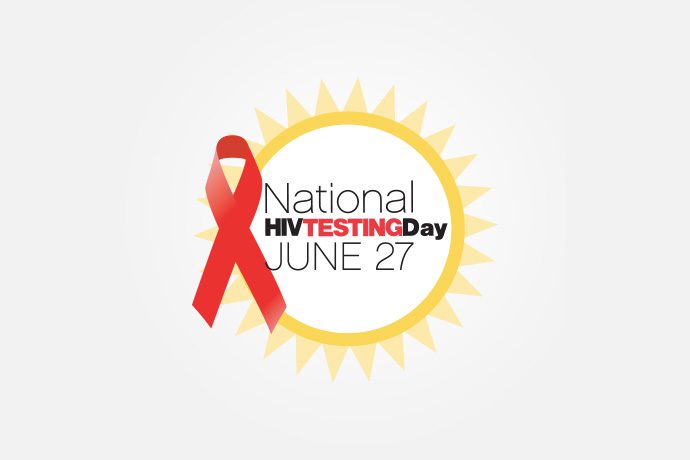Search by Color or Cause


National HIV Testing Day takes place annually on June 27 to encourage people to get tested for HIV. It also encourages people to now their status. And, to seek care and treatment services. National HIV Testing Day was first observed in 1995. Knowledge of HIV status helps people choose options to stay healthy. Knowing your HIV status gives you the power to take control of your health. The only way to know your status is to get tested. HIV testing is free, easy, fast, and confidential. The awareness color associated with HIV Testing Day is red. Wear a red enamel pin, fabric ribbon, or red silicone awareness bracelet to bring attention to National HIV Testing Day.
An estimated 1.2 million people in the United States have HIV, but one in seven people with HIV do not know they have it. The Centers for Disease Control and Prevention (CDC) recommends that everyone aged 13–64 test for HIV at least once as part of routine health care. Those with certain ongoing risk factors, such as having more than one sex partner since their last HIV test or having sex with someone whose sexual history they don’t know should get tested annually. Some sexually active gay and bisexual men may benefit from more frequent testing (e.g., every three to six months). As part of proactive prenatal care, all pregnant people should receive certain blood tests to detect infections and other illnesses. These include syphilis and hepatitis B.
Testing is the pathway to engaging people in care and reducing the spread of the virus, a key pillar of the National Institutes of Health (NIH) HIV/AIDS research agenda. In addition, it is a key pillar to the National HIV/AIDS Strategy (NHAS) and the Ending the HIV Epidemic in the U.S. (EHE) initiative.
Research data from a National Institutes of Health (NIH) clinical trial show that receiving an HIV diagnosis soon after acquisition and starting antiretroviral therapy (ART) as soon as possible improves outcomes for people with HIV. Moreover, people with HIV who take ART as prescribed and maintain an undetectable viral load cannot transmit HIV, a concept known as Undetectable = Untransmittable, or U=U. For people who may be at risk of HIV acquisition, taking HIV medicine called pre-exposure prophylaxis (PrEP) or using other HIV prevention tools, can be highly effective at preventing HIV transmission. NIH supports research to develop and test new approaches to increase HIV testing.
Free HIV tests, including self-tests, are available across the United States. Find more information at the CDC Find Self-Testing Services in Your State website.
Check out these HIVinfo resources to learn more:
HIV Testing (Fact sheet)
Just Diagnosed: Next Steps After Testing Positive for HIV (Fact sheet)
The Basics of HIV Prevention (Fact sheet)
Pre-Exposure Prophylaxis (PrEP) (Fact sheet)
PrEP vs. PEP (Infographic)
Use the hashtag #HIVTestingDay to follow the conversation on social media. Check out social media resources on the HIV.gov National HIV Testing Day webpage or download social media graphics, videos, and other resources on the CDC National HIV Testing Day webpage.